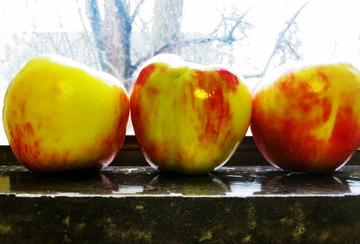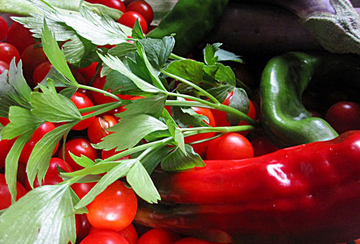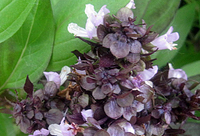
Fruit

The first fruit preservation method requires nothing more than cold storage.
Apples, quinces, and pomegranates easily last through the winter. Quinces don't even need to be kept in a cool cellar; placing them in a sunny window helps release their fragrance and increase their sweetness.
The second method, used from apricots, grapes and plums, is drying.
Overripe fruit paste can be spread in thin layers and dried in the sunshine, where the pectin inside the fruit turns the dried paste into fruit leathers.
The third method involves preserving the fruit in light syrup. This method works especially well for citrus and stone fruits, whose the flavor is further enhanced by adding blanched almonds or walnut pieces to the syrup. Sadly, this doesn't work for berries, which are too delicate to stay in one piece.
Last, jams and jellies, whose main characteristic is they contain just as much sugar as they do fruit. While that packs a lot of empty calories, sugar is a very good preserving agent and the result is delicious. Keep in mind that back in the day there was no such thing as blackberries in winter, and enjoying their taste in the sugary confection was a decadent luxury.

Vegetables

Vegetable canning methods vary based on their acidity and water content.
Acidic produce such as tomatoes, green beans, and summer squash can be canned in their blanching juices without a preserving agent, except maybe a bit of lemon juice or an aspirin tablet.
The produce is blanched and packed in jars, fully covered with liquid, then sealed for pasteurizing in a double boiler.
To prevent the growth of aerobic bacteria, green tomatoes, watermelon, cucumbers, summer squash, carrots, hot and sweet peppers, cabbage, broccoli, and cauliflower are pickled in large jars filled to the top with a near boiling salty brine.
Adding lemon juice, aspirin, or vinegar can assist in the pickling process, but it is primarily the salt in the brine that keeps the produce crisp.
A popular preservation method for pickling cucumbers and peppers is to use a combination of salt, sugar, and vinegar instead of brine.
Drying is an option for mushrooms, tomatoes, eggplants, carrots, and zucchini, whereas freezing works for most vegetables.
Onions and garlics are kept in long braided ropes hung on hooks.
